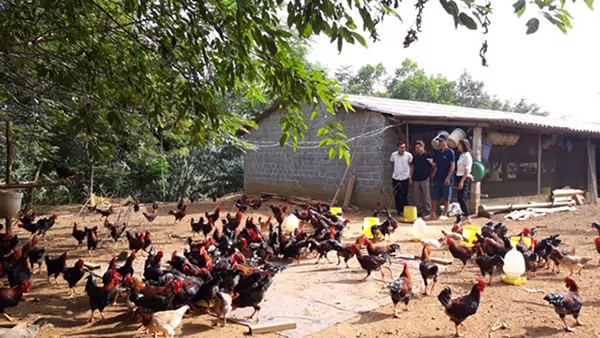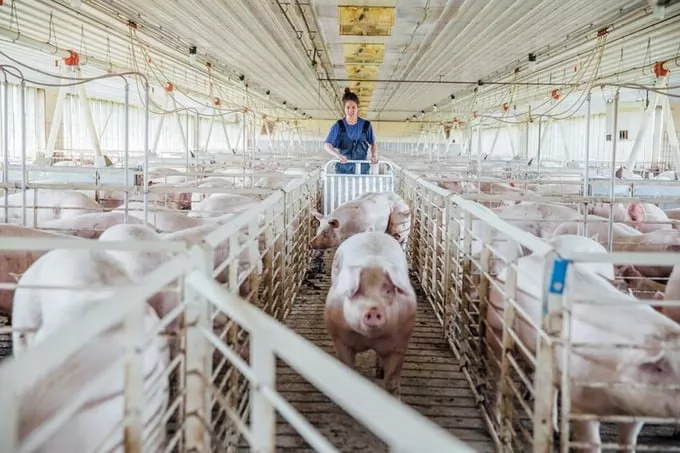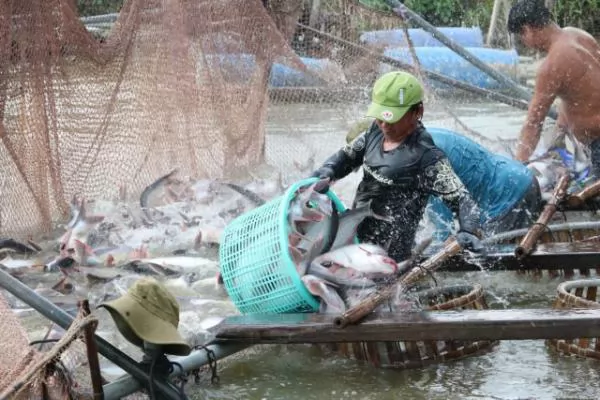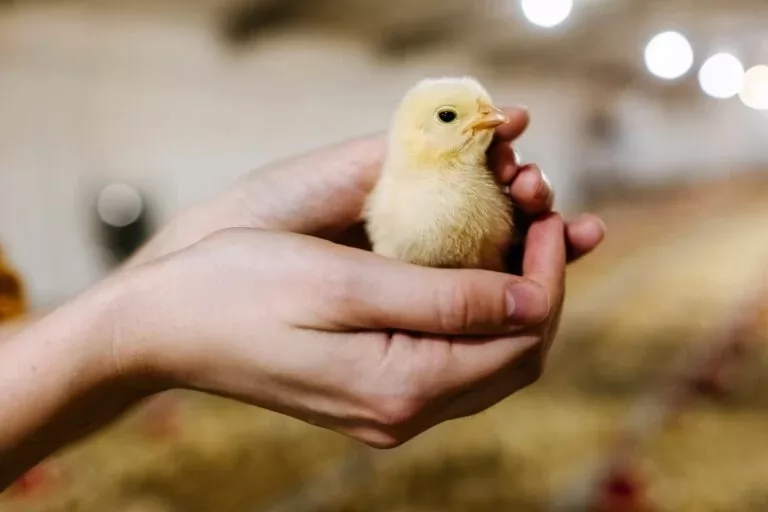Hà Nội free-range chickens thrive on herbal diet

Nguyễn Văn Hải's family, in Hòa Thạch Commune, Quốc Oai District, raise free-range chickens using the domestically-made herb, Livotas. — Photo courtesy of the Hà Nội Department of Agriculture and Rural Development
HÀ NỘI — The Hà Nội Agricultural Extension Centre has helped local farmers learn how to best use herbs to feed free-range chickens.
This model helps reduce food costs and antibiotic residue, increase the percentage of clean meat, contribute to environmental protection and create safe products for consumers, agricultural experts agreed at a recent seminar held in the city.
Organised by the city's Department of Agriculture and Rural Development and Ứng Hòa District People's Committee, the seminar 'Use of probiotics and herbs in livestock breeding and aquaculture production' aimed to encourage the development of biologically safe livestock and aquaculture.
Vũ Thị Hương, Director of the city Agricultural Extension Centre said: “Since 2019, the centre has successfully implemented the model of using herbs in raising free-range chickens, reaching the target of 50,000 chickens per year.”

Participants at the seminar 'Use of probiotics and herbs in livestock breeding and aquaculture production'. Photo courtesy of the Hà Nội Department of Agriculture and Rural Development
According to agricultural experts, the model meant free-range chickens are very healthy and their weight increases quickly, while breeders’ working days reduced and profit 10 to 15 per cent higher than in the traditional farming method.
Sixty-one farmer households in Thạch Thất, Quốc Oai, Chương Mỹ and Mỹ Đức districts and Sơn Tây Township developed this chicken-farming model with an investment of nearly VNĐ3 billion (US$130,400) from July to December of 2020.
Bùi Văn Tín, living at Đồng Chằm Village, Đông Xuân Commune, Quốc Oai District said: "By participating in this model, we are supported with a sum of money, and taught livestock care-techniques by the centre’s staff.
“Agricultural extension staff also closely follow the chicken-raising process of these households, and take us to visit typical models in neighbouring localities to learn and exchange experiences."
Nguyễn Văn Hải, in Hòa Thạch Commune, Quốc Oai District said: “Breeders start using the domestically-made herb, labelled Livotas (a mix of various kinds of herbs), with water when the baby chicken is 15-20 days old.
"Chickens are fed the mix once a day and continuously during the rearing process."
After three and a half months old, the chickens weigh from 1.1-1.2 kg per hen and1.5 - 1.7kg per rooster.
"Raising chickens according to this model helps my family reduce the cost of using veterinary drugs and the mortality rate of chickens," Hải said.
“Chickens are released in the natural environment, so the meat is firm, and the selling price is higher than that of chickens raised by industrial methods."
“On average, I earn a profit of VNĐ50-60 million/1,000 chickens.”
Many households have successfully developed this model, such as Phùng Văn Tuấn's family (raising 6,000 - 10,000 chickens) in Kim Sơn Commune and Nguyễn Thị Hương's family (2,000 - 4,000 chickens) in Trung Sơn Trầm Ward, Sơn Tây Township.
Vũ Thị Hương said: “This model brings remarkable efficiency and opens up new directions in animal husbandry, ensures food safety, limits the abuse of antibiotics in livestock breeding.
"It contributes to environmental protection and creates safe products for consumers.”
The centre has proposed the city Department of Agriculture and Rural Development deploy this model throughout the city and urged local authorities to support farmers to build brands and create a chain of sustainable links in livestock production to stabilise consumption.
This would mean farmers can develop poultry farming on a large scale, increase profits and create safe products for consumers. — VNS
Maybe you are interested

Detecting ileitis in a swine herd
Ileitis is an inflammation of the small and large intestines caused by an infection with the bacteria Lawsonia intracellularis.

Tra fish fry production to use more new technologies
Tra fish fry breeders should apply more new technologies to increase survival rates and reduce reliance on natural water resources, Phùng Đức Tiến, deputy Minister of Agriculture and Rural Development, said.

Early nutrition research in poultry is speeding up
Shifting market dynamics and the noise around new legislation has propelled Trouw Nutrition's research around early life nutrition in poultry. Today, it continues to be a key area of research.





